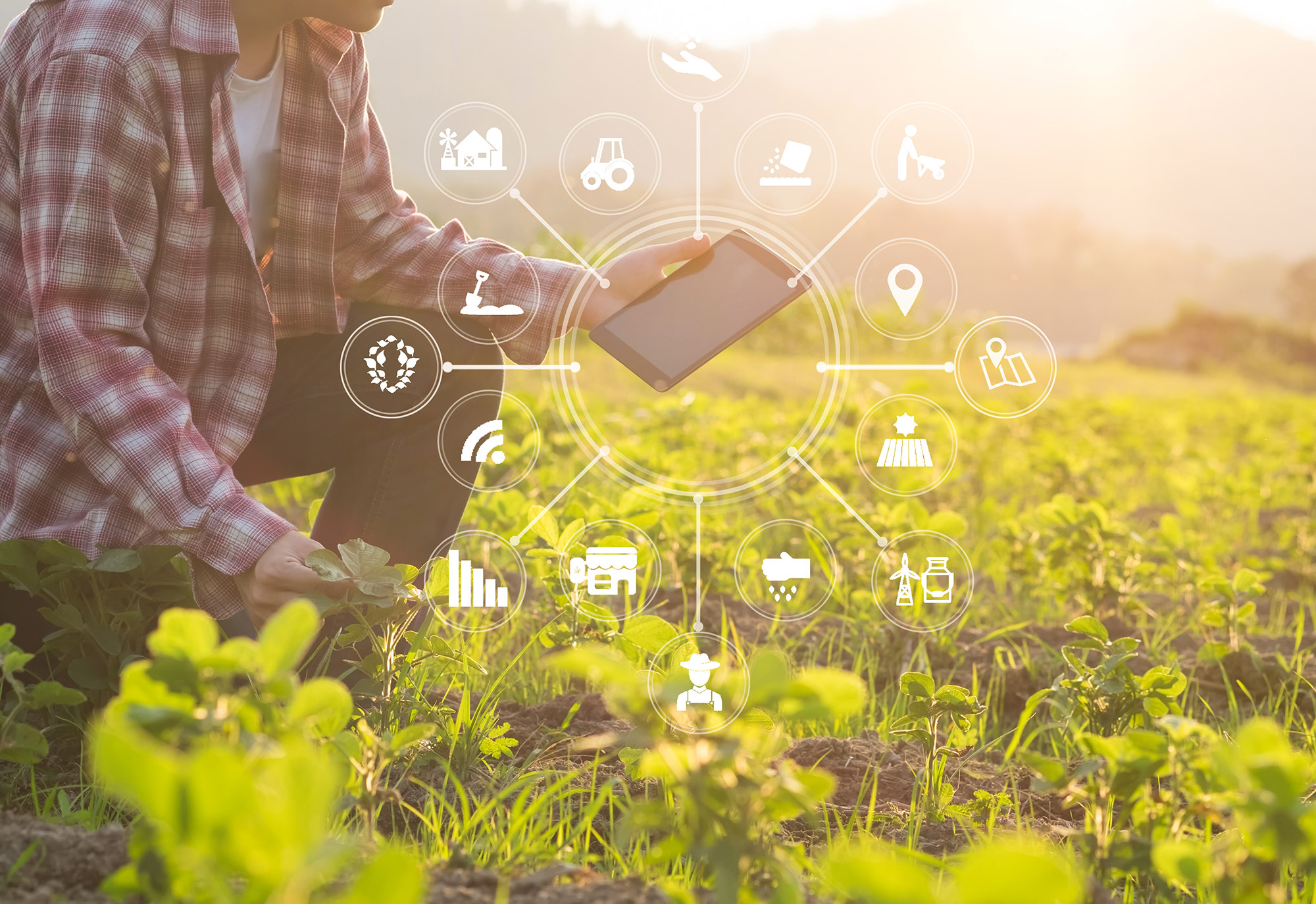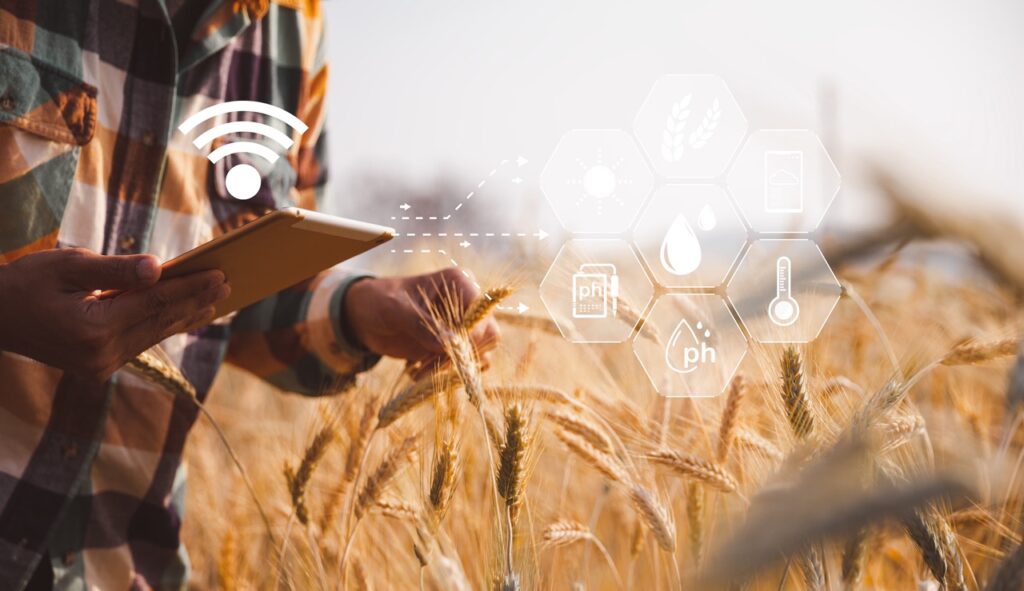 The IIoT benefits farmers and their products substantially, especially regarding how efficient growth cycles can become. Learn more in this article.
The IIoT benefits farmers and their products substantially, especially regarding how efficient growth cycles can become. Learn more in this article.
It’s estimated today that half of the organizations in the agriculture sector have adopted IIoT capabilities, according to Inmarsat Research. Even those who have yet to buy-in, largely agree that the Industrial Internet of Things (IIoT) is quickly revolutionizing how farmers grow food and people gain access to healthy food on a global scale.
Increased efficiency is one of the main benefits causing farmers to switch to tech-enabled smart agriculture.
Below, learn why smart agriculture is quickly becoming ubiquitous, as well as five ways these tools can optimize crop yields, increase profits, and simplify the farming process end-to-end.
What Is Smart Agriculture in IIoT?
Smart agriculture as it pertains to the Industrial Internet of Things (IoT) is the process of fine-tuning and optimizing the product cycle using digital tools.
These devices work synchronously to gather data and deliver critical insights that can be carried out by the technology itself or at the farmer’s discretion.
What are the Various IIoT Tools for Agriculture?
IIoT agricultural tools include, but aren’t limited to:
- Crop management devices that collect data such as precipitation levels, temperature, and soil quality.
- Agricultural drones that determine soil health from up above distribute localized pesticides and more.
- Cattle health monitoring and management devices.
- Greenhouse automation systems.
- End-to-end farm management systems.
How does IIoT Impact Our Lives Through Agriculture Automation?
- It provides larger quantities of natural food for a growing population.
- It lowers farmer production costs, which passes on savings to consumers.
- It increases product standards, creating healthier food at lower price points.
- It keeps workers safe and allows them to work efficiently.
- It enables farmers to grow their business safely and effectively, with far less risk than previous years.
How to Use IIoT in Agriculture to Improve Efficiency (5 Ways)
Here are five ways the Industrial Internet of Things can be deployed in agriculture to improve efficiency.
1. Monitor Climate Conditions
The use of sensors is one of the keys to well-executed precision farming (or precision agriculture), which is the art and science of making accurate decisions based on data. Often, climate sensors are the first piece of IIoT tech implemented in an agriculture setting.
These devices monitor climate conditions, soil quality, pesticide output, and other vital levels to help farmers increase yield using fewer resources.
2. Implement Tools that Reduce Production Risk
One of the significant advantages of IIoT in farming is the early identification of issues that could otherwise be missed or overlooked due to human error. This lowers production risk and gives farmers a better idea of what their harvest will look like months in advance.
Lower production risk gives farmers better control over product distribution, ensuring they acquire buyers early enough in the season and don’t wind up with unsold products.
3. Use IIoT Agriculture Tools that Lower Cost and Reduced Waste
IIoT capabilities reduce operational costs for farms of all sizes. More accurate data boost output without increasing staffing—and healthier, more robust crops yield better profit margins, too.
According to Inmarsat, lower operating costs have created a more sustainable farming practice for 37 percent of farmers.
4. Use Technology to Elevate Crop Standards
With a firm grasp of the production process and more data to conclude from, farmers can use IIoT devices to produce healthier, nutrient-dense food. A higher standard yields better profits, as well as reputation and growth capacity. This is true for the product of fruits, vegetables, and even cattle.
Whatever the product, intelligent agricultural tools help farmers identify outliers, address localized issues such as pest infestations, and deliver those signals (or an appropriate intervention) before it’s too late.
5. Use Mobile Devices That Allow for Flexible Work
Gone are the days where farmers had to be on-site throughout the entire grow cycle to ensure the health of their products. Thanks to mobile devices that utilize edge solution technologies, farmers can access information remotely from a smartphone or application.
Because many devices work autonomously, the number of decisions farmers must make in general has also been drastically reduced with IIoT technology.
What are the Challenges of IIoT In Agriculture?
As it stands, the significant challenges of IIoT in agriculture relate to robust internet connectivity in rural areas and elevated hardware costs. Fortunately, though, affordable solutions like ours use rugged hardware and even satellites to provide farms with the power they need to stay connected.
The growth of IIoT tech in agriculture (and all sectors) is all but inevitable in the coming years, though. So these current challenges may become nonissues faster than many would expect.
Visit our site to learn more about FreeWave’s Smart Ag solutions: https://www.freewave.com/industries-applications/precision-agriculture/.



